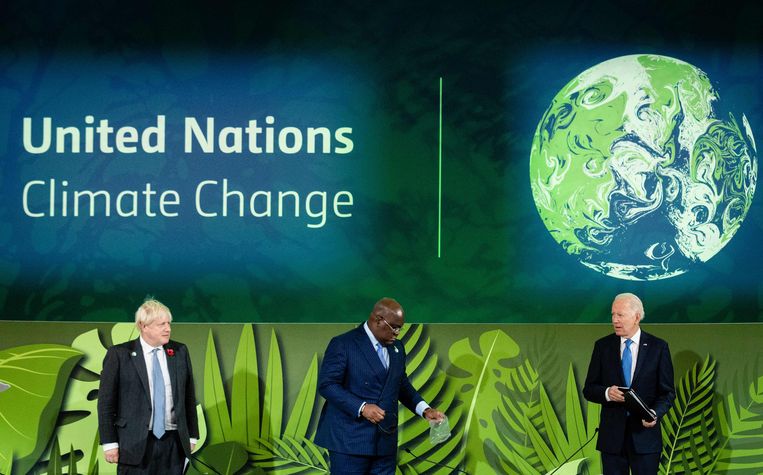
It is easier to reach an agreement on deforestation than to implement it
The promises of the leaders of a hundred countries about deforestation are surrounded by many uncertainties. At a climate conference in Glasgow on Tuesday, they reached an agreement on stopping deforestation by 2030 and restoring forests. Gert-Jan Nabuurs, a professor at Wageningen University and an expert in the field of forestry and climate, says it all depends on the desire of countries to implement their words. “Such a pledge has been made many times. If the cameras are close, government leaders want them, but they are very difficult to implement.
Nevertheless, Naburs is positive about the deforestation deal. “It helps to focus on this problem.” The signatories make 16.5 billion euros available for the activities. Part of the money will be spent to support tribal groups opposed to deforestation and to stimulate new economic activity when deforestation stops. Participating countries Brazil, Indonesia and Congo hold 85 percent of the world’s forests.
Why is it important to stop deforestation?
An international group of scientists, the New York Declaration on Forests, said in a report a few weeks ago that anti-deforestation measures would solve 20 to 30 percent of the climate problem. Merijn van Leeuwen of the World Wildlife Fund (WWF) sees this as a reason to ‘start now and wait until 2030’. “Trees store carbon dioxide in the leaves and roots. They retain moisture and reduce global warming. They are also important against drought. About 50 to 75 percent of the rain in the Amazon comes from the evaporation of moisture from the leaves. Thus the Amazon receives the heaviest rainfall over much of South America.
What options does the contract offer?
Environmental groups Milieudefensie and Greenpeace responded skeptically on Tuesday: the agreements were not tied and it was too late to stop deforestation by 2030. But WWF’s Merijn van Leeuwen sees this as a ‘step in the right direction’ and sees opportunities for serious action, such as the IUCN’s Sander van Andel (International Union for Conservation of Nature) aid to indigenous peoples and the promotion of justice. Good governance in forested countries.
Something could definitely change, says Professor Naburs. “There are examples of countries that have really made great strides. Lula, who was president of Brazil for eight years until 2011, was able to reduce deforestation to 3 million hectares per year to 500,000 hectares. Over the years, deforestation has increased again, and Nabuurs believe the agreement will put pressure on countries such as Brazil to tackle deforestation, which he points out is declining worldwide, but not enough.
What is the use of this agreement for the Netherlands?
“It will not have any consequences for the Netherlands,” says Van Leeuwen. “With more forests, the earth is warming faster, which is good for the Netherlands. Trees can grow in sustainable forests. The world has enough farmland to feed it. It does not need deforestation. It is better to eat less.
According to Van Leeuwen, the implementation of European forest law is important. It prohibits the importation of products produced by deforestation. IUCN’s Van Andal says a draft of the proposal could be released by the European Commission in two weeks. He points out that Dutch financiers, especially Rabobank, lend billions to companies involved in deforestation. “This agreement encourages countries and companies to stop deforestation and create economies that include nature,” argues Van Andel.
Agricultural land and paper pulp
Agriculture is a major cause of global deforestation: 80 percent of deforestation is due to the expansion of agricultural land. Other key drivers are mining, infrastructure and urbanization.
Most trees are cut down in the tropics. Brazil is increasingly deforested each year, and many trees have fallen in countries such as Bolivia in South America, Congo-Kinshasa in Central Africa and Nigeria, and Papua New Guinea in Indonesia and Oceania.
Farmers and farming companies are clearing tropical forests for the fertile soil below. A lot of soy is grown in South America, in Central Africa it is mainly coffee and cocoa. In Oceania, many palm groves are forested. Crops are exported to China, the European Union, India and the United States as animal feed, nutrition, or food.
One-third of the trees cut down end up as pulp for paper. Europe, Russia and North America are the largest producers of timber. If the FSC is certified, the use of wood on furniture and floors will not be harmful.
read more:
The fact that Glasgow wants to put an end to deforestation is an important step against climate change
Countries facing deforestation at the Climate Summit in Glasgow. Scientists say this could be a major step in combating climate change.
We have a powerful tool to deal with the climate crisis: nature
Nature can help us solve the climate crisis. So choose regenerative agriculture and stop deforestation, argues Santiago Coland, CEO of the Rainforest Coalition.

“Coffee fanatic. Friendly zombie aficionado. Devoted pop culture practitioner. Evil travel advocate. Typical organizer.”
